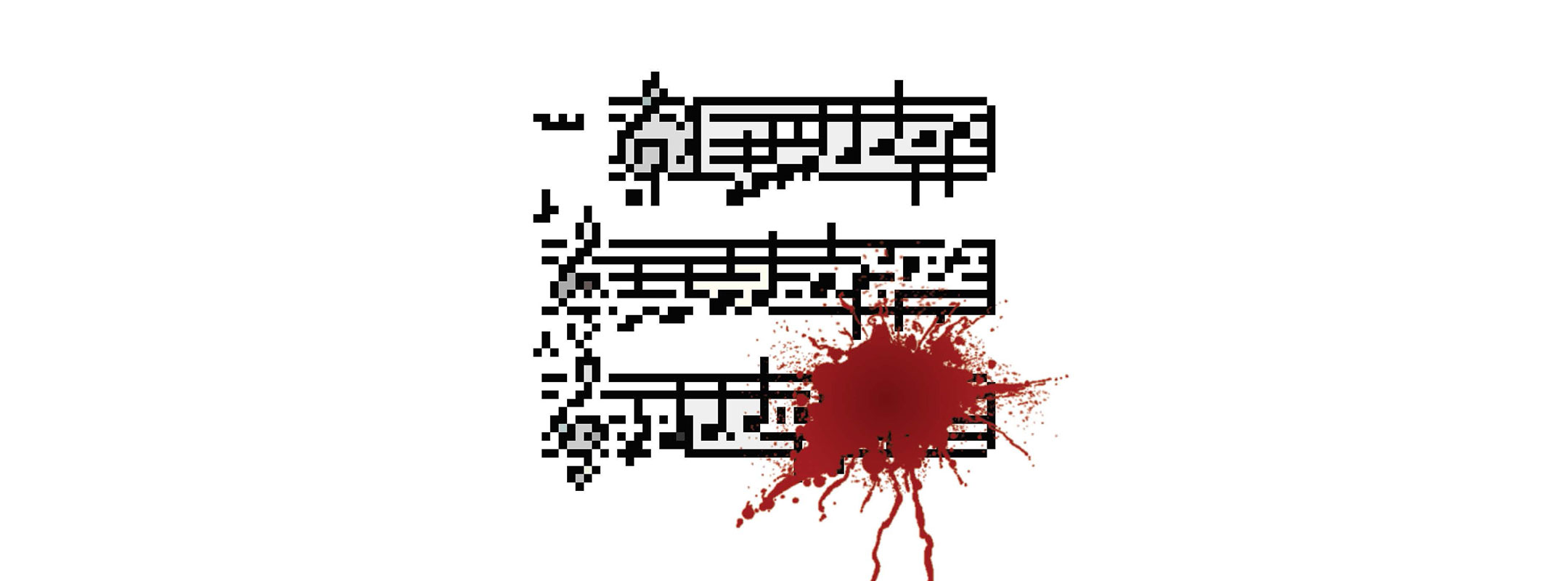
The piece is set up as a surrealist TV series or documentary in the vein of Twin Peaks or Black Mirror. But certain aspects take place live - it needs performers to bring it to life - breaking the 4th (and 5th) walls. The narrative is shaped by the interaction between the live performers and the sound and visuals on film.
It’s a continuation of a series I began in 2016 with my piece Black MIDI, which zooms in on that microgenre, tapping into its mysticism and going deeper, reinterpreting its meaning. In both Black MIDI and 8-Bit Noir I wrote scripts and created characters and scenes where each scene is set up and then enhanced by the live performers.
The TV Guide/Netflix synopsis of 8-Bit Noir:
A possibly malevolent entity with lo-fi tendencies appears without warning in people’s homes, mailboxes, in their books and even at the local music conservatory. Confusion gives way to terror and mayhem. 11PM Eastern/8PM Pacific.
You’ve been described as a ‘musical scientist’ with a lot of your works pushing technological objects to the point of audible destruction. How did this interest in ‘glitches’ first come about and how do you use it in your music?
My father is an electronics repairman, salesman and collector - and has been for most of his life. By the time I came along his shop and our house was full of electronics dating as far back as the 1940s. He never threw anything away. Some of these machines didn’t work properly but, as they were analogue, they rarely completely shut down. They entered into what I now call the ‘purgatory phase’. They’re no longer suitable for consumer use because of their erratic behaviour, but they still produce sounds and visuals. These were compelling to me from quite a young age. Even the physical appearance of the machine - most were large, with wood panelling, several knobs and buttons, and often I would see them with the panelling removed and their circuitry exposed. This was the 1970s and 80s; a technological golden age, which meant my father was being sent new devices probably almost every week. And many of them became instruments to me at that moment. Even those that did work - i.e. the Atari 2600 console - became a source of sound that I knew would mix well with the orthodox instruments around the house like pianos, guitars and drums.
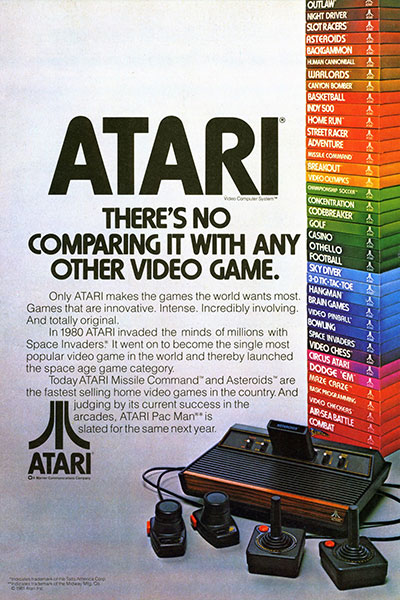
Atari 2600 advert from the 1980s
The glitches were a musical sound to me; on equal footing with an instrument. Most people would probably hear it as noise and tune it out. The choppy rhythms they produced, the warping of pitch, the hums and distortion. And visually it was a colour and light show. One of my most memorable glitch experiences happened while watching RCA Selectavision video discs in the early 1980s. These were extremely unstable and degraded quickly. The more they were watched the more deteriorated they would become - but they didn’t shut down - they just sounded and looked more incredible every time. And each video disc/film produced its own specific glitches. The Sound of Music’s glitches were different from Alien’s. The sounds, rhythms, textures I heard at this time became ingrained in my brain. My intention was always to one day include them in my music.
What draws you to these new sounds you find in old technology?
I’m drawn to their unorthodox beauty, their singularity, their unpredictability, the idea of reviving something that was left for dead. There’s an emotional element. I love that they have associations with some other place, time and, especially, function. Members from the audience will approach me after a performance and tell me they remember the device but didn’t expect to see and hear it in an orchestral concert.
The idea that a machine - that is created for a specific purpose - could be manipulated or break down to a point where its only function becomes purely aesthetic is exciting to me. I think of these machines as being set free. They no longer have to conform and now they can live their new lives in new environments. Of course one unfortunate aspect is that these machines were soon replaced - eventually by digital and software - and they were banished to landfills and dumpsters. Even those that continued to work properly; they were once considered the height of technology - but quickly became outdated and obsolete. These machines were built to last; they can be repaired. My father still does this. But it’s becoming more difficult as replacement parts become scarce and it’s cheaper to simply buy something new and digital. But it’s not the same.
There are also ghosts in these old devices. They have connotations for a lot of people and carry with them certain expressions, feelings, undertones, etc. This can apply to the machines themselves and/or to the media played on them.
You often work with film in your compositions, including in 8-Bit Noir. How you do balance the relationship between the live and recorded mediums?
Everything is written simultaneously: the score, the track, the film - so that all three coexist equally. Everything needs to be intertwined and inform each other. The film - and the characters on the film - are treated as members of the ensemble; as instruments. The visuals have to completely meld with the score. I never want visuals to be accompaniment and I never want the musical material and performance to be arbitrary and take a backseat to visuals.
Moments in the score are orchestrated in such a way so as to extend elements from the video outward into the live performance: foley sounds, the orchestra harmonizing with vocals on the screen, etc.
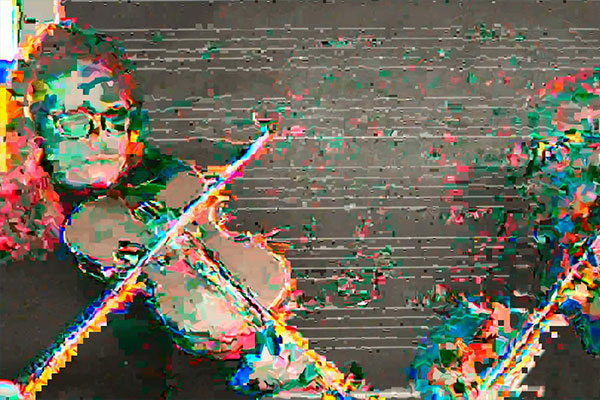
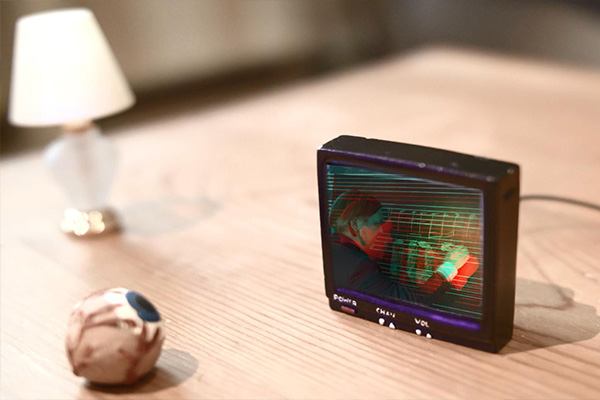
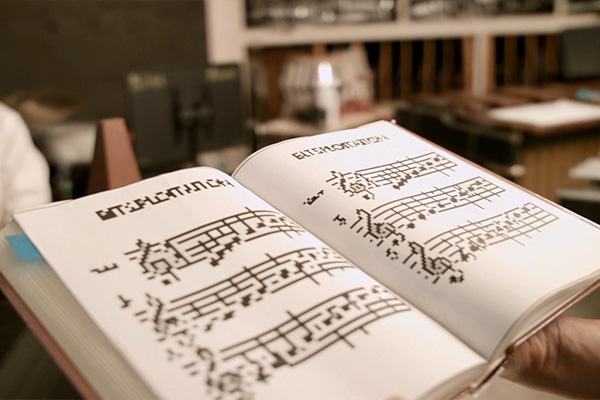
I also think of these components as extending the foley and the sound design beyond the screen and into the ensemble. It creates a type of 3D - and, again, seeps into and past the 4th and 5th walls.
Which came first, the title or the music?
I had 2-3 ideas for titles swimming around while writing the piece and then decided on one when the time came. As the concept for the piece is very specific, all of the titles referenced 8-bit in some way. A secondary title for the work is Bitsploitation, which can be seen on the vocal method book in the film. This was the working title for a while.
If you weren’t a composer, what would you want to be?
A filmmaker.
What’s on your playlist right now?
Mitski - Be the Cowboy. I heard about this record over a year ago but didn’t actually hear it until a couple of weeks ago. It’s been on repeat ever since. I start every day with Lonesome Love.
PJ Harvey - Let England Shake. I got into this album heavily in the fall of 2013 for a couple of months. I recently came across a song from it by accident in another person’s playlist and this rekindled my obsession. So many twists and turns. It’s impossible to listen to just one track. The whole album is an experience from start to finish.
DJ Koze - Knock Knock. It’s ‘down the rabbit hole’ music where you don’t where you’ll end up.
Phantom Thread soundtrack - stunning film and score
Mandy soundtrack - stunning film and score
Thundercat - Drunk. Another ‘down the rabbit hole’ album.
The Damned, The Germs, Fear, Sex Pistols, Black Flag - I’ve been watching the Punk documentary and got back into records I hadn’t heard in a long time and ones I had never heard in their entirety: i.e. The Germs. So great.
Arca - Arca. A recent discovery. Addicted.
Various song obsessions:
Lee Hazlewood and Nancy Sinatra - Some Velvet Morning
A-ha - Take On Me. The acoustic version from ca. 2017. Can’t help it.
Massive Attack/Burial - Four Walls
Burial - Come Down to Us
Father John Misty - Holy Shit
Kate Bush - Under the Ivy
You can hear 8-Bit Noir at Southbank Centre on Sunday 29 September 2019 as part of Unclassified Live. Find out more here.
8-Bit Noir was commissioned by Southbank Sinfonia with co-commissioners the Manitoba Chamber Orchestra, and with the generous support of Nicholas Warren & Catherine Graham-Harrison.